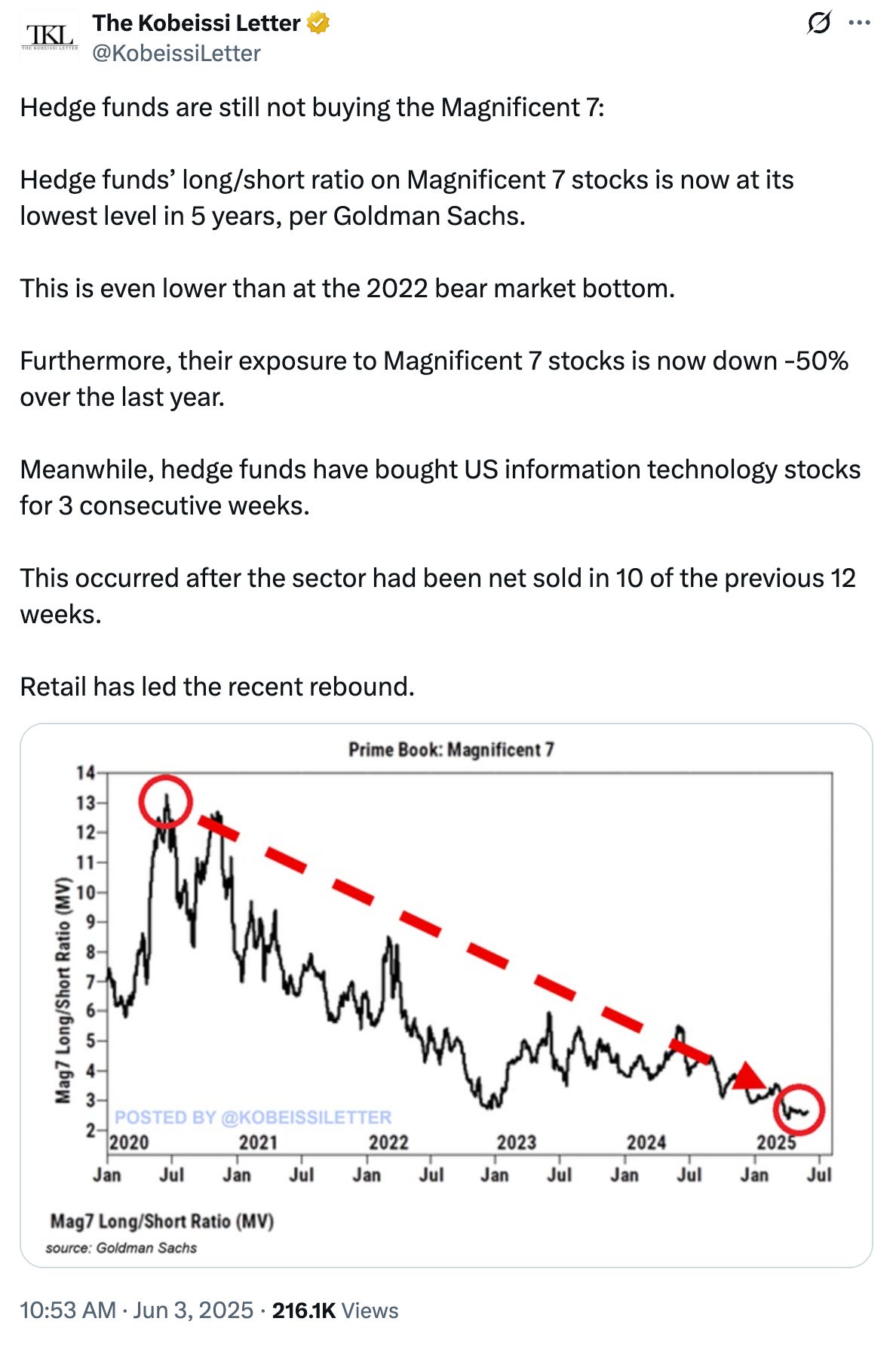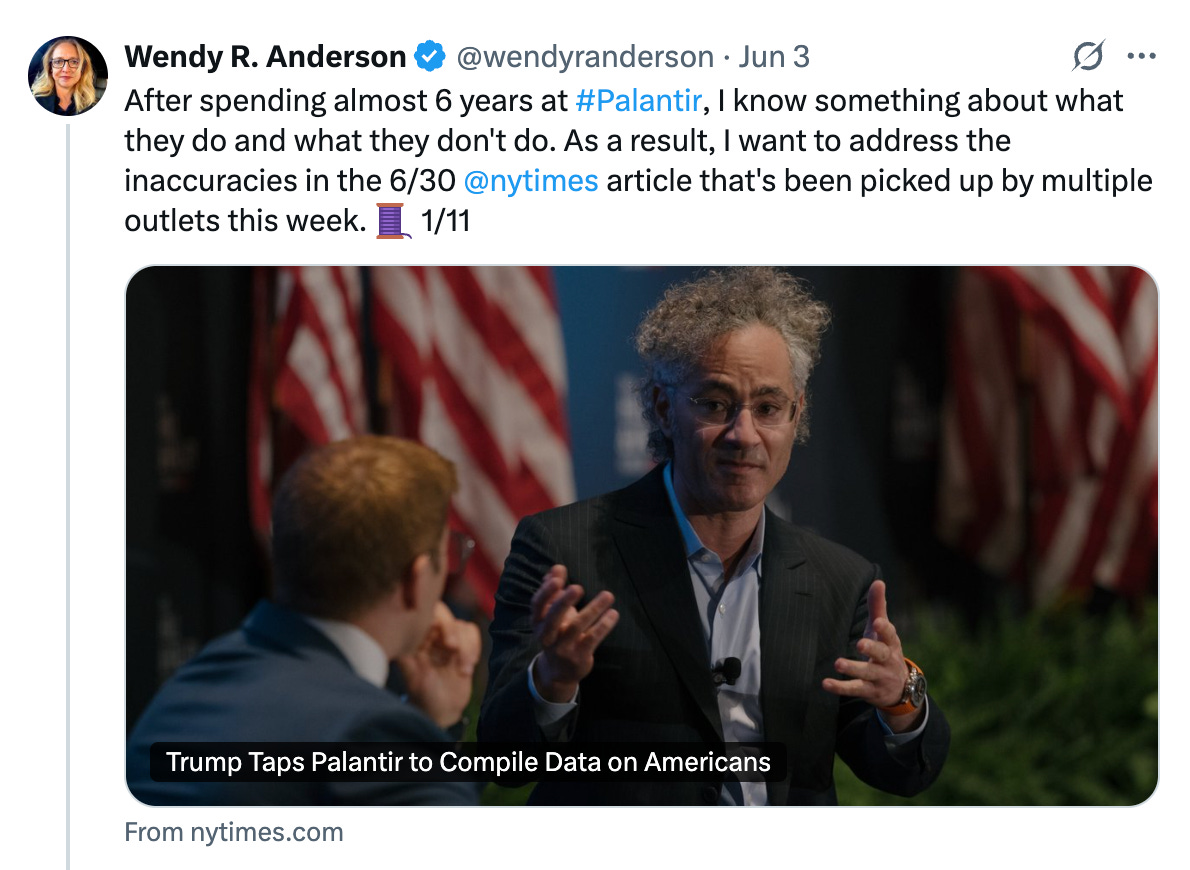What I Read This Week…
Circle IPOs and raises over $1 billion, Apple researchers indicate that reasoning models are still only pattern-matching, and a new method to purify titanium could turn it into a low-cost material
Watch All-In Interviews with Mayor Francis Suarez and Jared Isaacman
Read our Deep Dive: A Primer on the Magnificent 7 (Part 3 - Google)
Read our Deep Dive: A Primer on Stablecoins
Read our Deep Dive: A Primer on Cryptocurrencies
Come join the Besties and Me at the All-In Summit in September
Caught My Eye…
Circle went public this week in one of the most successful IPOs in recent memory, with shares 25× oversubscribed and the company raising $1 billion, more than double expectations. Shares priced at $31 closed their first day of trading on the NYSE at $83, giving the company a market capitalization near $19 billion, and then rose again to over $107 the next day. Circle is best known as the issuer of USDC, a dollar-backed stablecoin widely used for digital payments and on-chain financial infrastructure. For years, Circle has operated ahead of U.S. regulation, building the underlying architecture for stablecoin issuance, compliance, and settlement in advance of regulatory and legal clarity. Regulatory and legal clarity may be formalized soon through the GENIUS Act, a bipartisan bill advancing in the House Financial Services Committee that would establish a comprehensive regulatory framework for stablecoins. In a market where the company that builds the most efficient infrastructure with cost-plus pricing (and a thin margin on top) wins, Circle’s head start and the resources raised through its IPO could give it an advantage over competitors. The IPO’s success suggests that public markets are open to new listings, especially from crypto companies, and reinforces that regulatory clarity may be the decisive factor in opening both private and public markets.
A recent paper from Apple researchers systematically evaluates the reasoning abilities of leading reasoning models, including Claude 3.7 Sonnet and DeepSeek-R1, using custom-designed puzzle environments that allow precise control over problem complexity. The study finds that while reasoning models outperform language models on moderately complex tasks by generating longer chains of thought, they consistently fail to solve high-complexity problems. These models exhibit three distinct performance regimes: standard language models perform best on simple tasks, reasoning models excel at mid-range complexity, and both types break down at a certain level of complexity (including a threshold of complexity where model accuracy becomes 0%). Moreover, reasoning models' tokens spent thinking paradoxically decrease as problems become more complex. Basically, language and reasoning models are probabilistic systems that are not yet “internalizing” an understanding of the topics from first principles. This is why video generation AI models haven’t grasped physics (e.g. conservation of momentum, object permanence, rigid body dynamics), despite all the data they’ve ingested.
A new method to purify titanium could be a blueprint for making it a base metal rather than a niche, high-cost material. Titanium is valued for its strength, corrosion resistance, and light weight, making it critical for aerospace, medical implants, energy systems, and manufacturing. But because titanium has a strong chemical affinity for oxygen, even small amounts of oxygen trapped during processing make the metal brittle and unusable for structural applications. Current methods to remove that oxygen, such as the Kroll process, rely on multi-step reactions with chlorine and magnesium that are slow, expensive, and energy intensive. Researchers recently demonstrated a new technique that removes oxygen directly from molten titanium using rare-earth metals like yttrium. Yttrium binds to dissolved oxygen to form stable oxyfluoride compounds, which are separated during melting. This reaction takes place in an induction furnace that keeps the titanium agitated, allowing for uniform deoxidation. The process allows high-oxygen-content titanium from ore or recycled scrap to be refined in a single step, without chlorine, to reach ultra-low oxygen levels of 200 parts per million. That purity typically requires multiple costly refining passes. By cutting complexity and enabling recycling, this method could transform titanium from a specialty metal into a mass-market material with applications in aircraft frames, electric vehicle components, offshore wind turbines, industrial heat exchangers, and biomedical implants. Today, China controls around 85-90% of global yttrium production.
Other Reading
FDA Integrates AI Across its Operations to Streamline Reviews and Inspections (FDA)
China’s Rare Earth Restrictions Complicate Global Supply Chains (Financial Times)
Meta in Talks for Scale AI Investment That Could Top $10 Billion (Bloomberg)
Apple’s Struggles to Update Siri Lead to Concerns over AI Strategy (Financial Times)
OpenAI Hits 3M Enterprise Users with 50% Growth Since February (VentureBeat)
Anthropic Open-Sources Method to Trace Thoughts of LLMs (Anthropic)
What "Working" Means in the Era of AI Apps (Andreessen Horowitz)
With Fewer Deals and New Funds, VC Dollars are Growing More Concentrated (Carta)
Tech Giants in the Gulf are Building Super-Apps to Dominate Digital Life (Rest of World)
Anduril Secures $30.5B Valuation in Latest Fundraise (Reuters)
Gemini Confidentially Files for U.S. IPO as Crypto Markets Heat Up (Reuters)
YouTube Tests Region-Specific Thumbnails for Dubbed Videos (Business Insider)
New Unilever CEO to Hire ‘20 Times More Influencers’ in Marketing Boost (Campaign)
On X…









An awesome experience in information. Full mind expansion. Rereading multiple times.
Great overview thanks Chamath! Lot happening in the world. We already know all the steps that need to be taken. I am starting a new chapter on my favorite book lucky trigger. Love the messages so far.